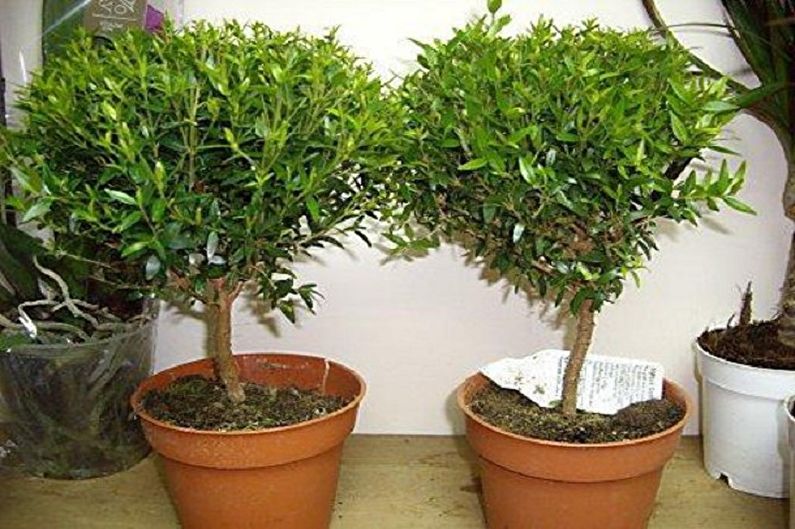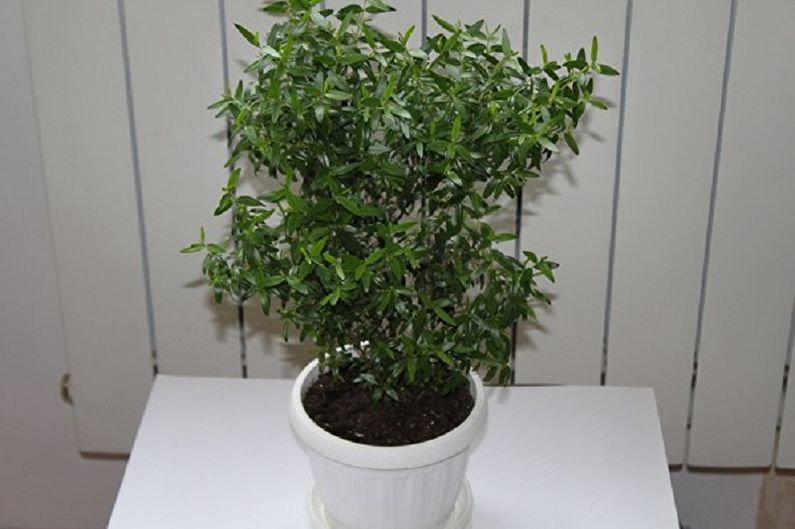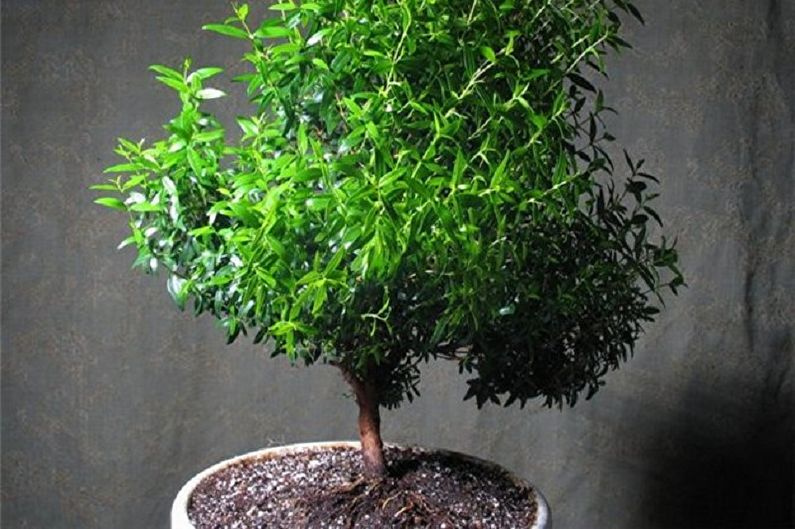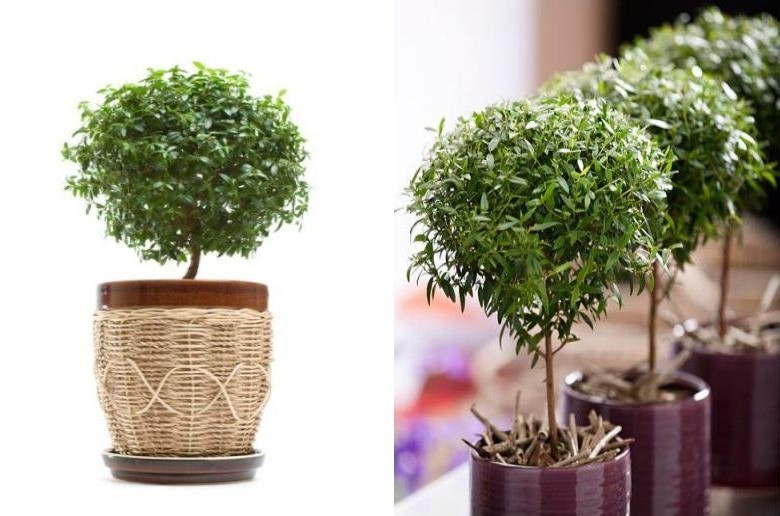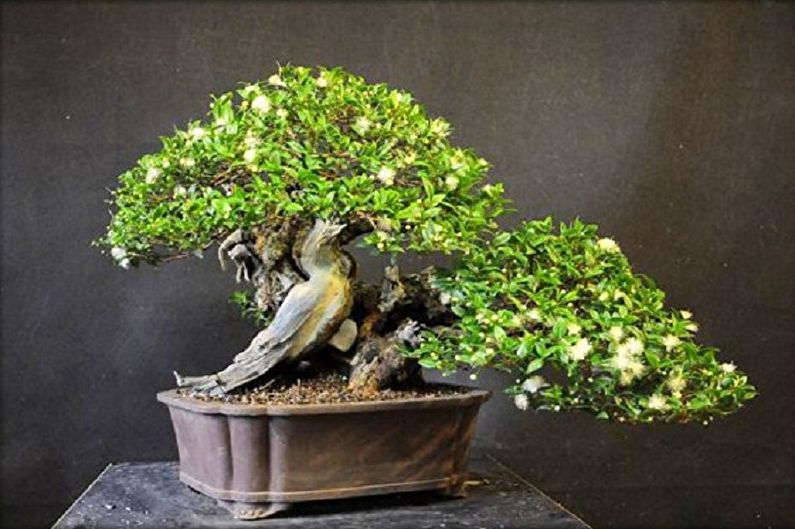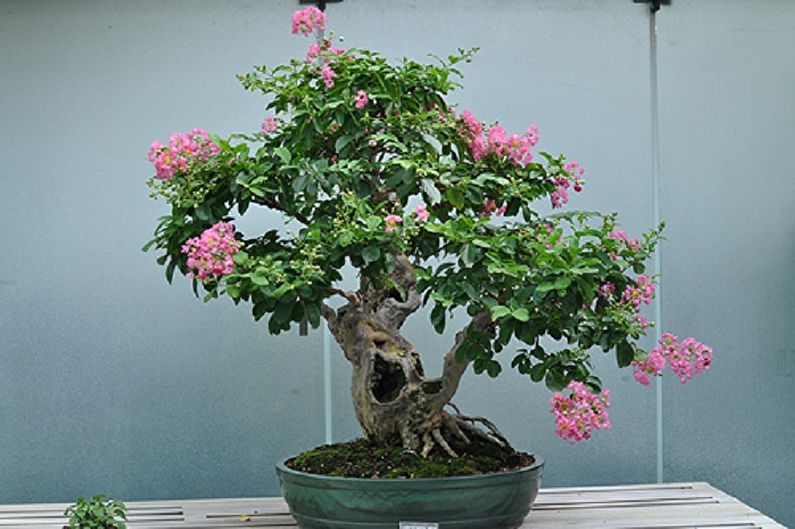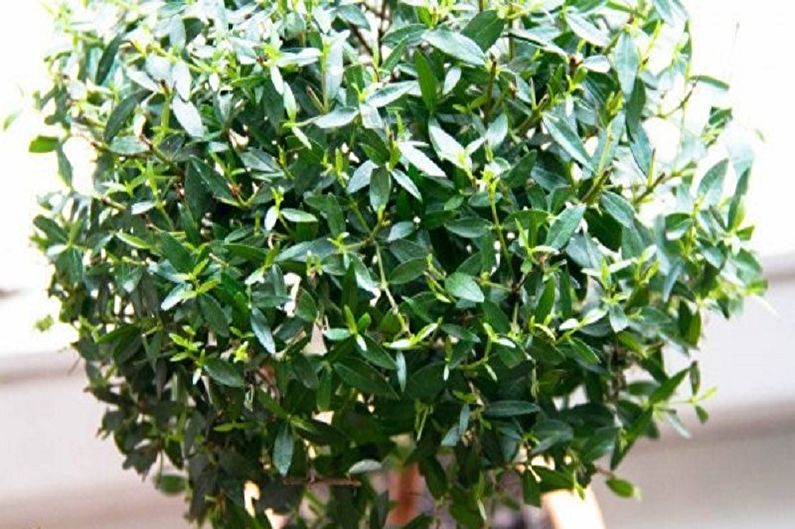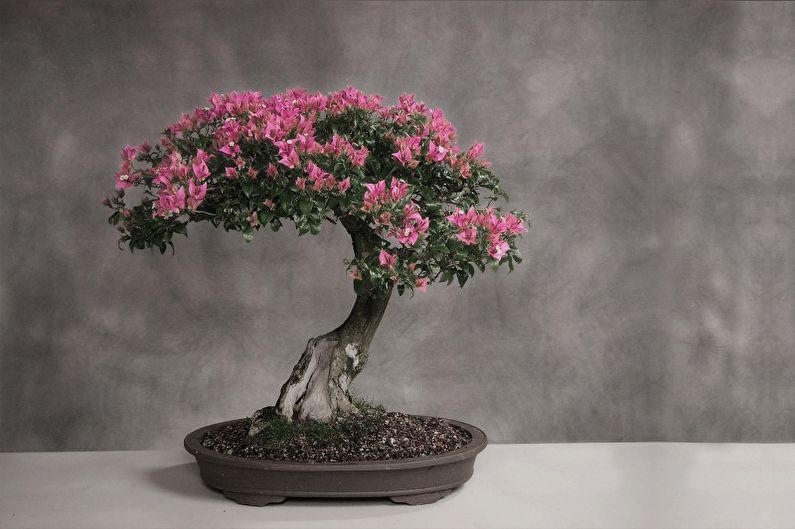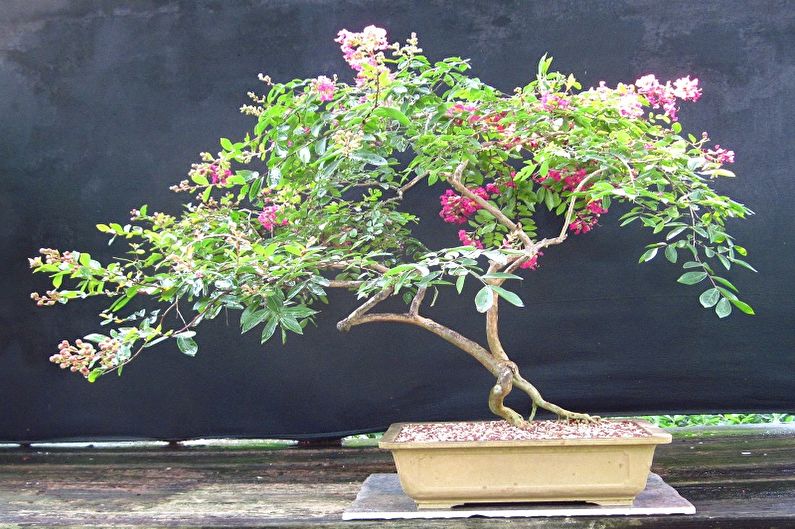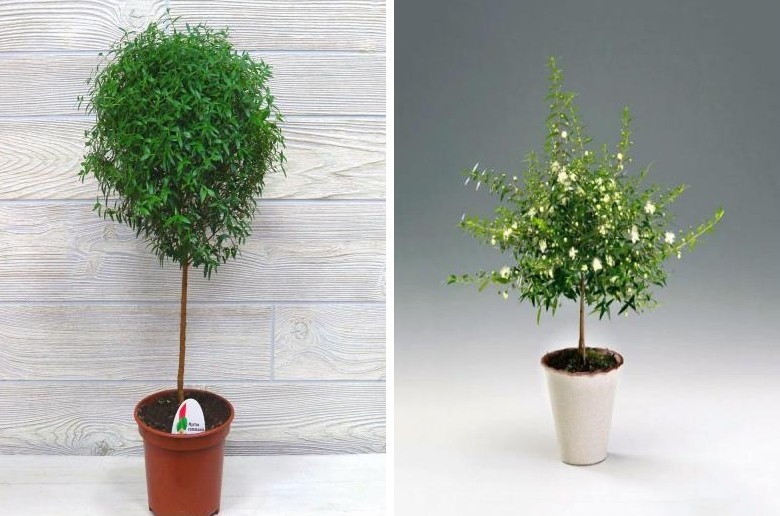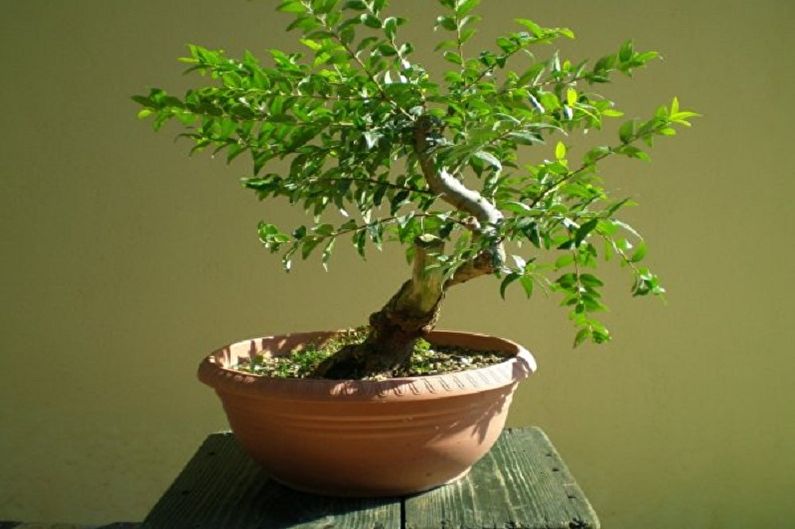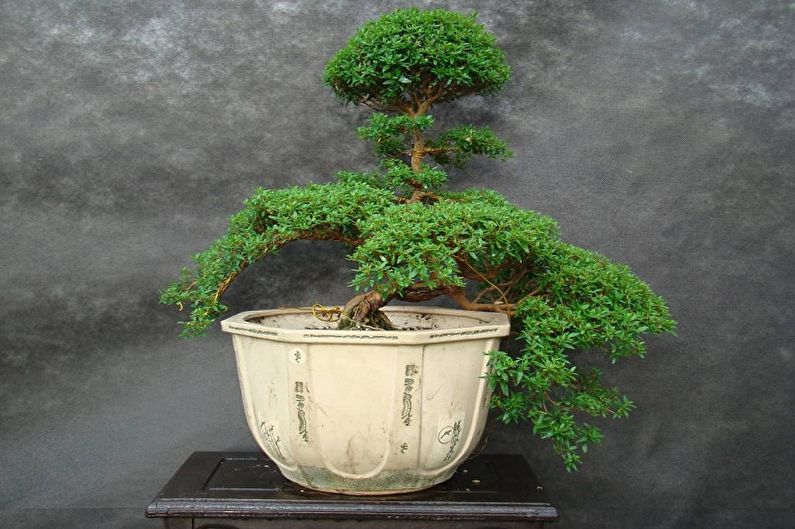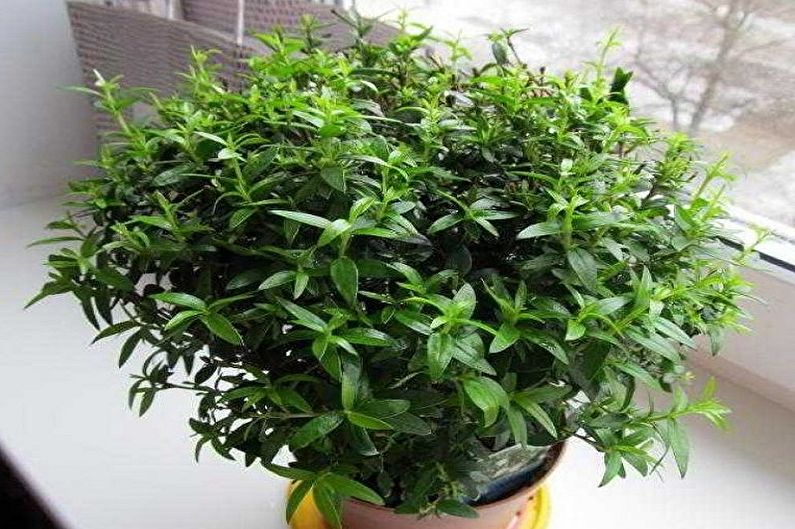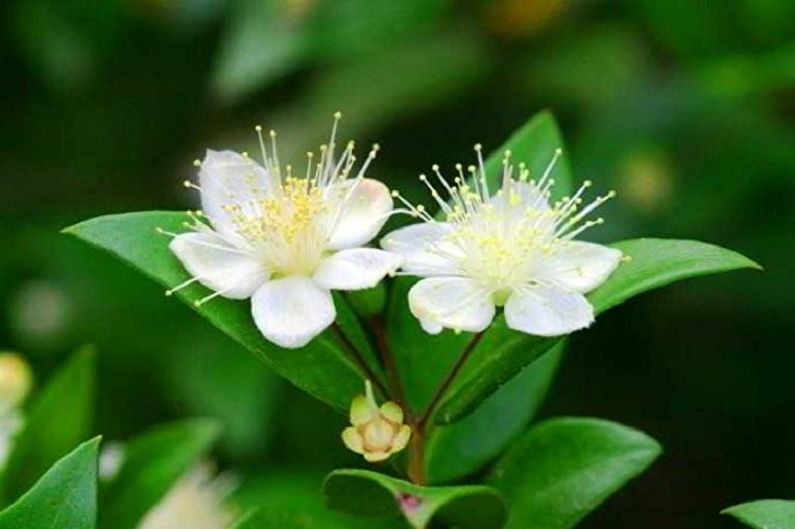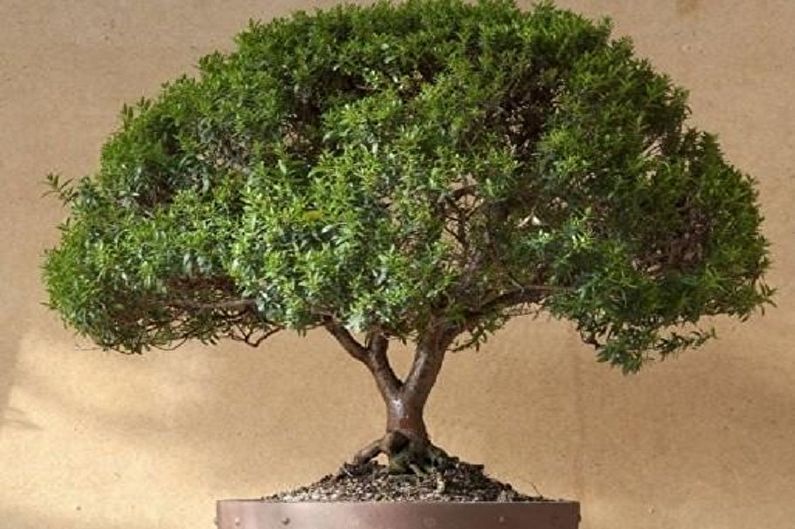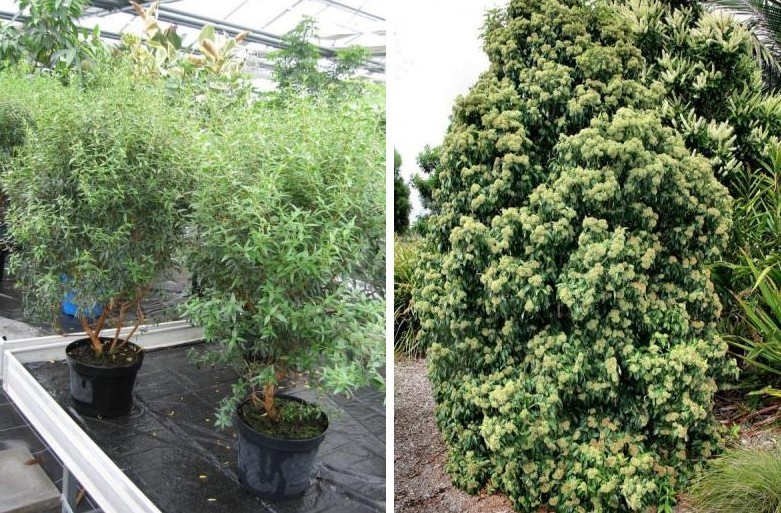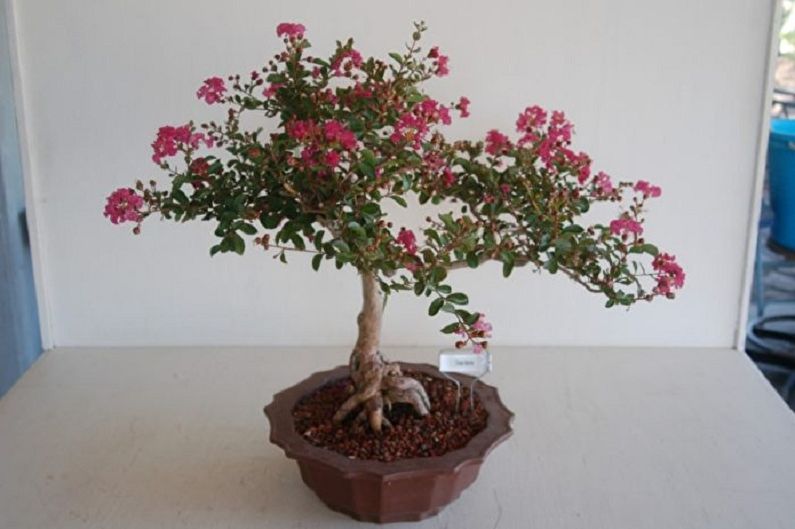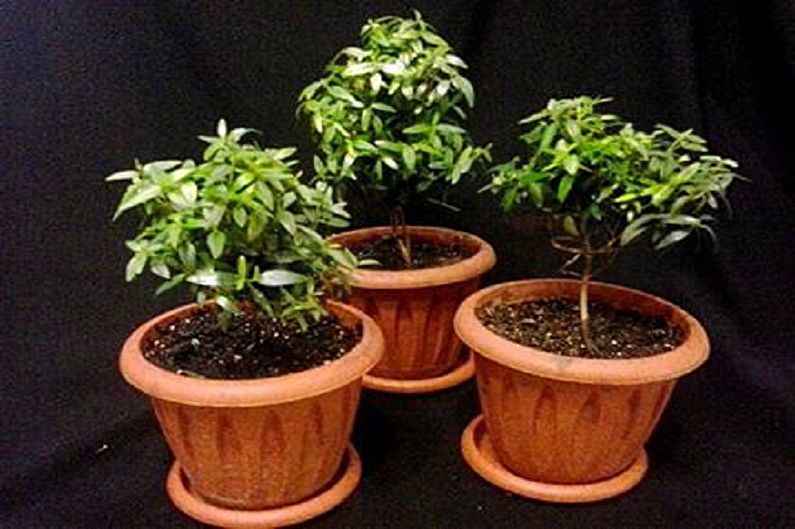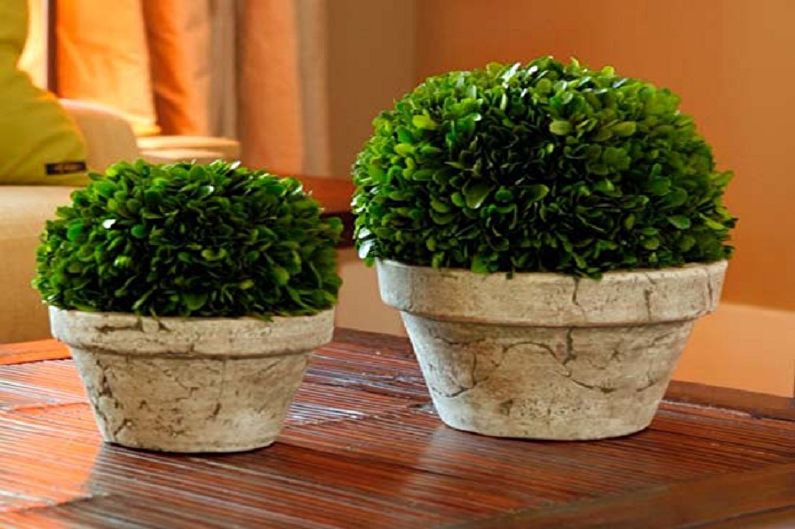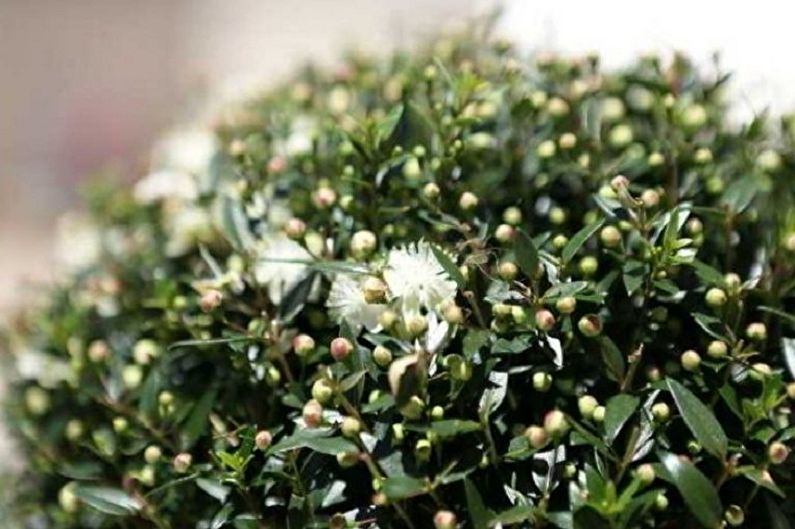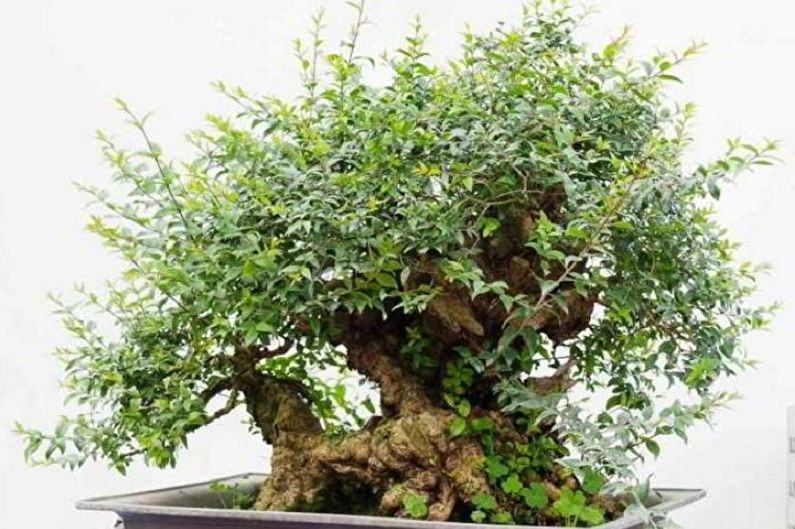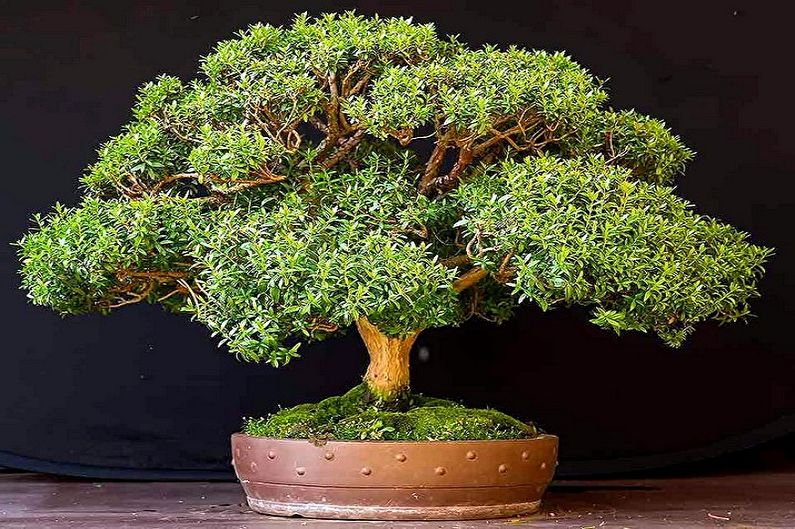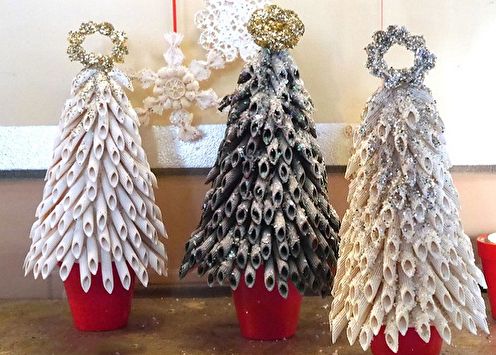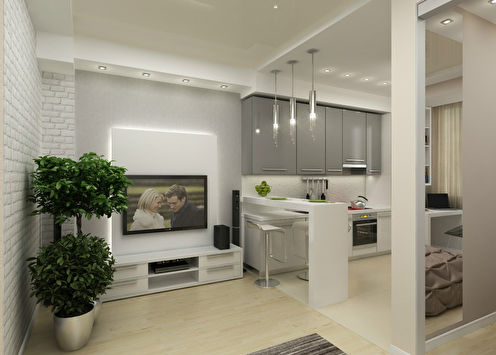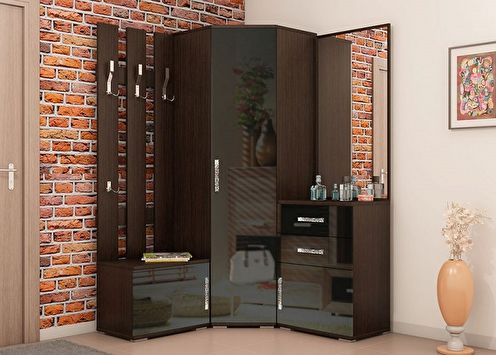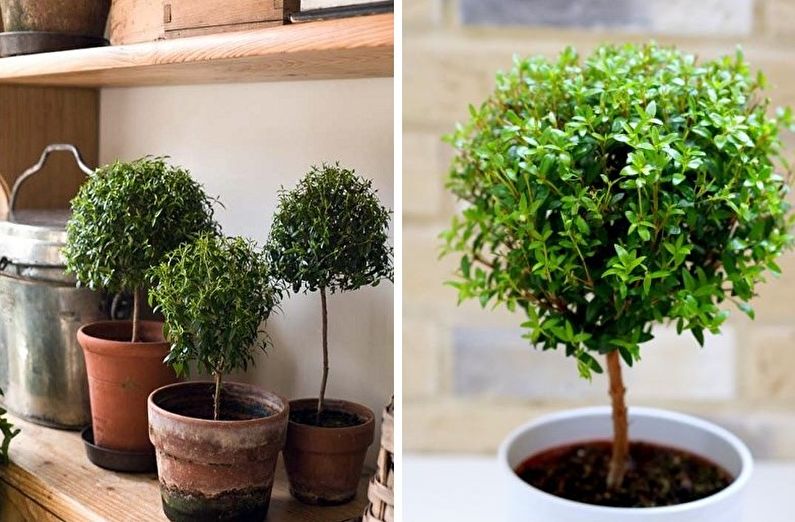
Indoor plants - the best decor. They refresh the interior, make it more vibrant and vibrant. In addition to these obvious advantages, the myrtle tree also has a natural disinfecting property and is suitable for any design. So, if you decide to opt for this ornamental shrub, it makes sense to get to know him better.
Key Features
Myrtle tree is a genus of woody vegetation native to the Mediterranean. This is an evergreen representative of the flora, emitting essential oil with a pleasant aroma. Even in antiquity, incense was made on the basis of myrtle, while cloves, even today, are used to make spices.
At home, as a rule, a compact or ordinary myrtle tree is grown. Other varieties poorly take root in such conditions.
The ordinary look is distinguished by a thick and beautiful crown, which can be formed in different ways, and by a ligneous trunk. The maximum growth that can be achieved at home is 2 m, and the first flowering occurs after 3 years from the first day of life. Their shape resembles an egg, they have a dark green hue and a length of 4-6 cm. Small inflorescences are white or pink buds.
The compact variety, as the name implies, has miniature dimensions and narrowed leaves. After flowering, tiny black berries form on it.
Myrtle has not yet had time to fully adapt to living in four walls, but, in comparison with other indoor plants, he lives quite a long time. In order for the green mini-shrub to please you as long as possible, it is important to familiarize yourself with its features and the main subtleties of caring for it.
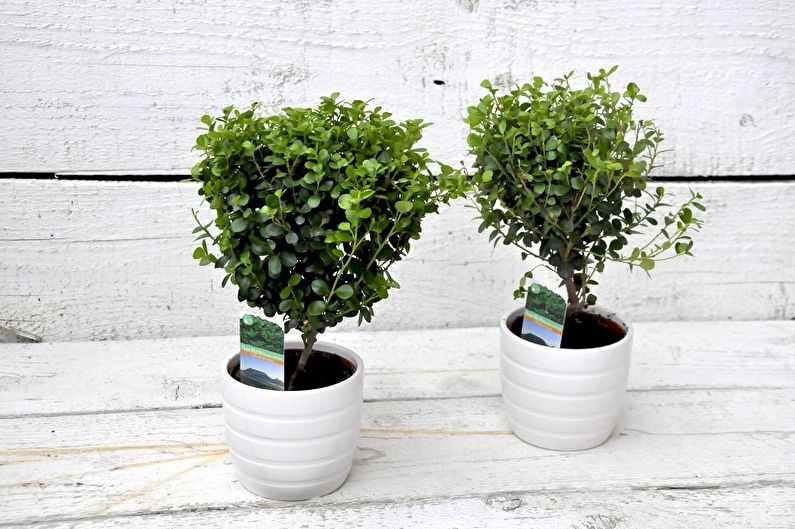
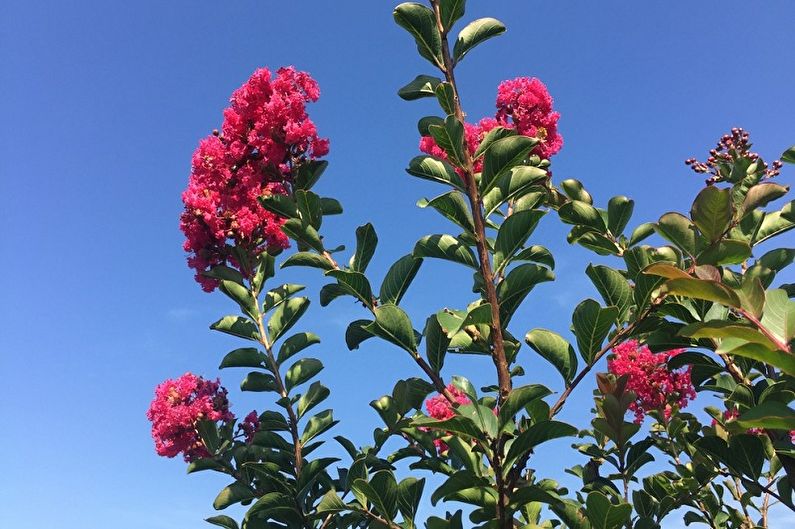
Location and Lighting
First of all, it is worth paying special attention to the peculiarity of this plant - winter time always coincides with the rest period, and it must be observed without fail. Based on this, the place of the myrtle tree may vary depending on the season, as well as the temperature conditions in the room.
In summer, it is best to place it in the garden, for example, it will very organically fit into the composition of stones. Myrtle needs the rays of the sun, but on the other hand, if natural light is very aggressive, arrange a light shadow for it. With the right approach, the representative of the flora will make you lush flowering.
If you want to leave a decorative tree at home, then it is logical to place it on the windowsill. It is not recommended to put the pot near a window facing north, where flowering is rather meager, and also on the south side, where strong rays of light can adversely affect foliage.
The degree of illumination also affects the length of the resting period. Even at this time, it is better to put the plant in that part of the room where there is a sufficient amount of natural light. If the myrtle receives the necessary heat, then the rest period will be approximately 45 days, and in cold and dark places - about 90 days.
Consider also the fact that moving the myrtle tree from very different places in terms of illumination should be done carefully and gradually. Rearrange it closer to the window for several days.
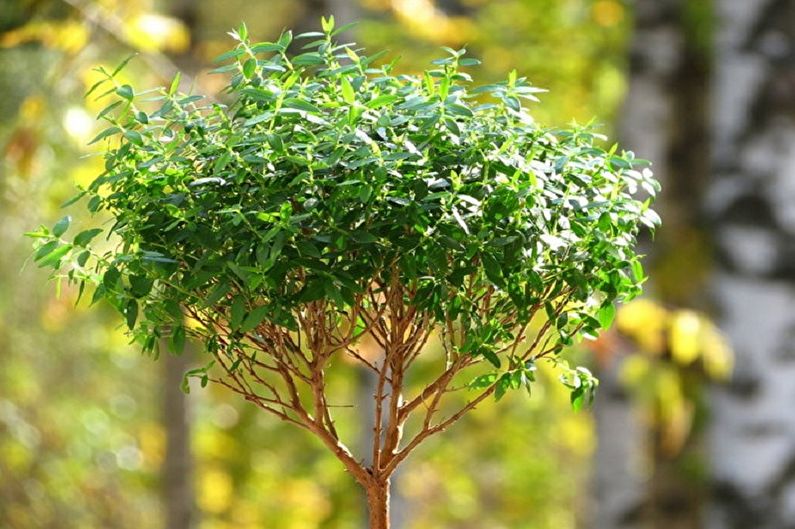

Myrtle Tree Care
Maintain the soil in the pot in a state of moderate humidity, do not allow the formation of dry crust. These rules apply to any season, but special attention should be paid to the level of humidity in the summer. As soon as you notice that dryness forms on the top layer, immediately provide plenty of irrigation.In winter, watering the soil can be much less common, but the water should be warm and, preferably, soft, without impurities.
Myrtle tree does not require high humidity in the atmosphere, while dry air is not at all desirable. Watch this especially carefully during heating and battery operation, as well as in sultry summers. In warm seasons, the plant should be sprayed regularly, but in winter this is best not to do.
In the summer and spring seasons, the air temperature in the room as a whole is conducive to the good health of the myrtle. However, the most comfortable myrtle feels in a somewhat cool environment. Provide him a mode between +17 and + 21C.
Overwintering a decorative plant will help marks within + 8 ... + 10C. If you provide a temperature of + 5 ... + 6C, then the tree will survive, and with proper care nothing bad should happen to it. A more negative effect in the cold season can be exerted by an indicator above + 10C - under such conditions, foliage is showered.
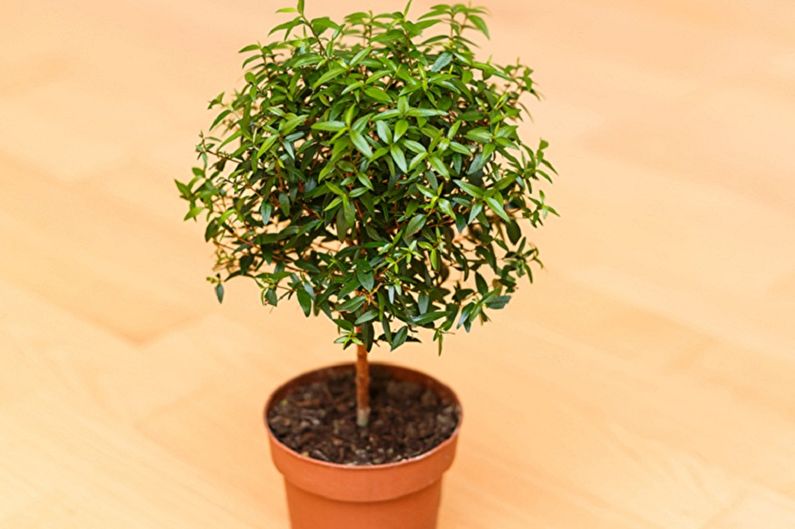
Feeding and cutting
During the period of activity, myrtle requires regular feeding. From the beginning of spring to the onset of autumn, add fertilizer every week. For a small and neat plant, purchase a special nitrogen recharge for ornamental vegetation. If you dream of a lush bush, use the usual phosphorus additives for indoor plants that bloom.
At the stage of acquiring a myrtle tree, decide which one you want to see it in the future. If the tree is not cut at all, you will get a triangular shape. Trimming the top causes the plant to cluster. Getting rid of the side shoots forms a luxurious, voluminous crown.
Any configuration does not interfere with beautiful flowering. It can only be regulated in this way: if you are carried away by pinching, then it will become less plentiful, but the foliage will increase the additional mass.
In general, the shape of the crown is a great field for experimentation. At the same time, the young plant is not yet able to hold a massive crown. However, after a couple of years with proper care, it will surely delight you with lush foliage.
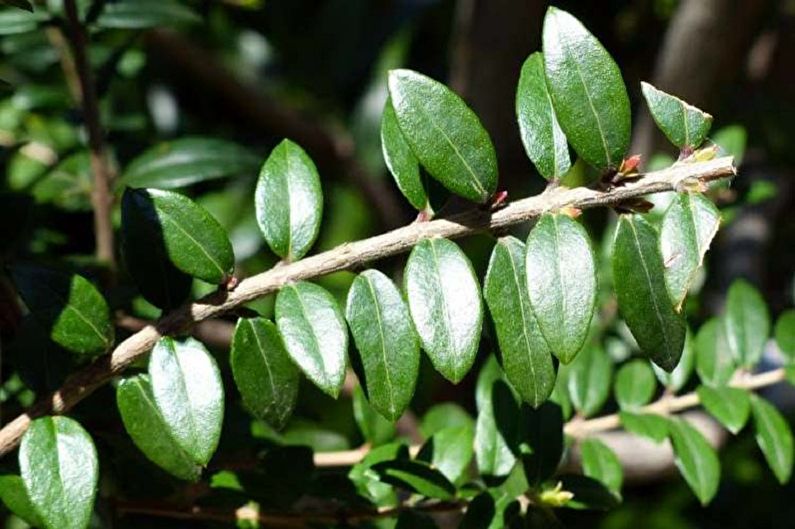
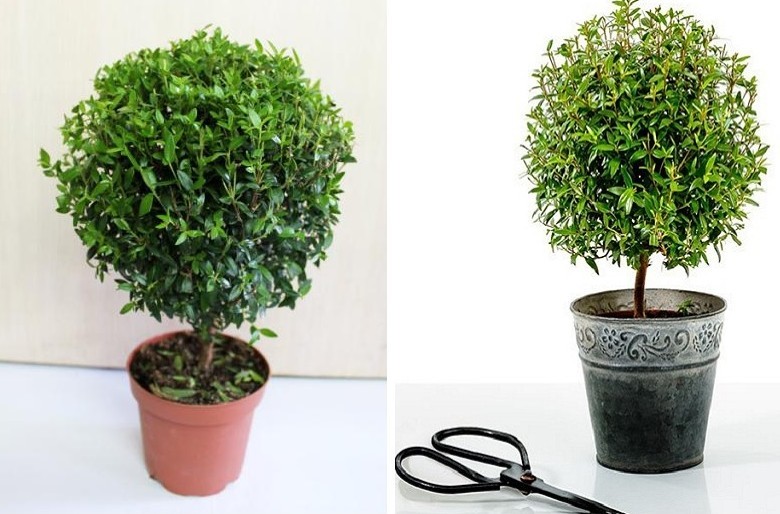
Reproduction and transplantation of myrtle tree
Reproduction of the myrtle tree can occur in several ways - propagation by seeds and cuttings. Seeds are not the most reliable and effective way for beginners; better try the second one. The sprouting of cuttings is easier to observe, and the first flowers will appear 1 year earlier.
So, cuttings are cut in the middle of summer or in the last days of winter. Part of the plant for separation should be in the middle of the crown or below. Pick strong branches with a length of 7-10 cm. Cut off or tear off the main part of the leaves, and shorten the rest by about 2 times; if the leaf is small, then remove a third of the length.
To make the future tree better rooted, treat it with a solution of heteroauxin or root. Then plant in granular sand mixed with earth with leaf humus. Choose a shallow but wide pot.
The temperature for successful development should be in the range + 17 ... + 21C, which is most consistent with room indicators in the winter. Also try to protect the sprouts from a large amount of light. Cover the plant with a clear plastic bottle, cut in half, or a jar, a bag. But do not forget to ventilate the young trees, they should in no case be affected by rotting processes.
The root system will develop to an optimal level in a month or a little faster. When you notice that the myrtle is ready to find its own "home", transplant it into a pot for indoor plants with a diameter of 6-8 cm.
Young myrtle transplant every year. Change the place of residence of an adult plant is only as necessary. In the process of transplantation, monitor the location of the trunk, its base should be above ground level.
Pick up a pot not very large, this is a frequent omission of inexperienced gardeners.Suppose a three-year-old plant has enough open space with a diameter of 10–12 cm.
Fresh soil can be bought at a specialized point of sale.
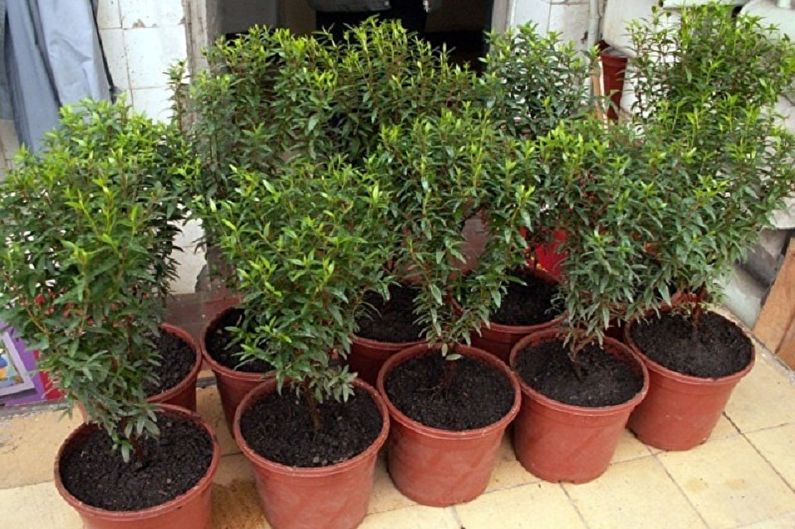
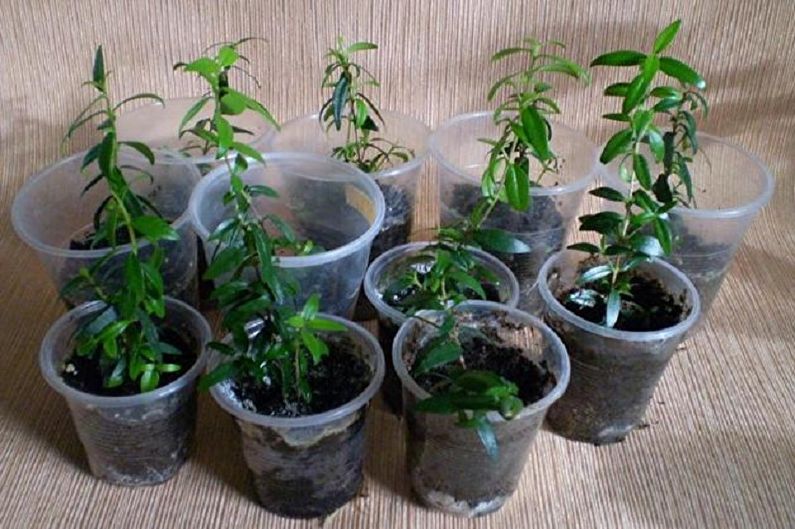

Diseases and Pests
The main troubles that you may encounter during the cultivation of this shrub are related to the degree of humidity and temperature conditions. If the situation is too hot and dry during the winter, you will find that the wonder plant turns yellow and discards foliage. In addition, spider mites often wind up in such an atmosphere.
Also note: the myrtle tree forms an essential oil, but does not emit tar. Such liquids indicate that the green inhabitant of the house is struck by a scale shield. Insects are not so easy to notice, since they practically do not move, but you can find small dark growths with a wax coating that parasitize.
If you encounter this problem, then immediately move the pot away from the rest of the vegetation and proceed to treatment. You can get rid of pests with a soap solution with the inclusion of alcohol or special means from the store. Perform the procedure at intervals of 5 to 10 days. Do not forget to cover the ground so that the substances for processing do not get on the soil.
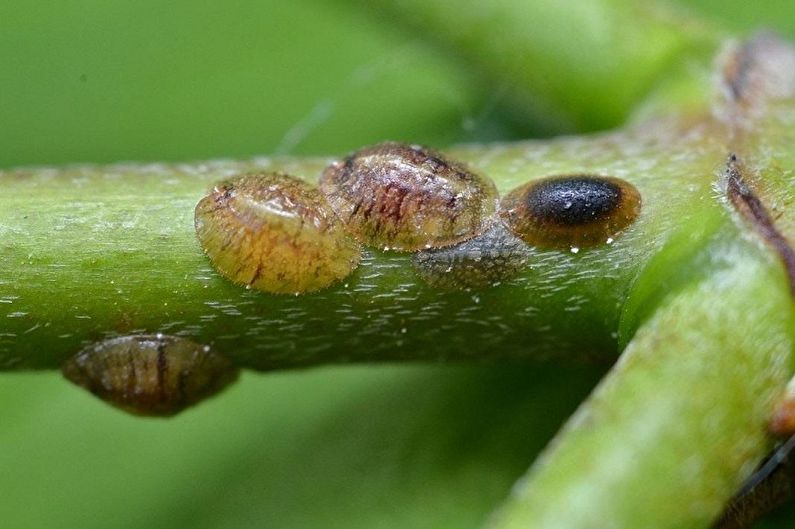
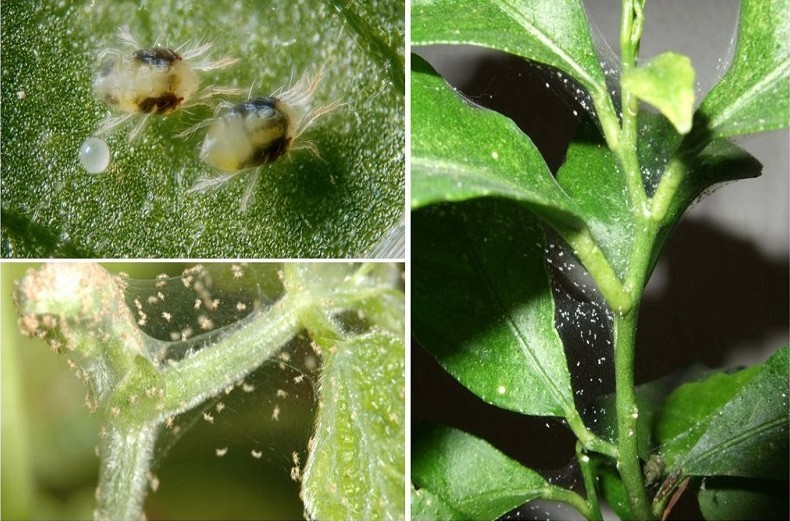
Myrtle tree - photo
The minimalistic myrtle tree looks fresh and unobtrusive. If you have not yet decided on what kind to pick up or what shape to give to an already acquired tree - welcome to our selection of photos. Here you will find diverse and beautiful solutions. Enjoy watching!
